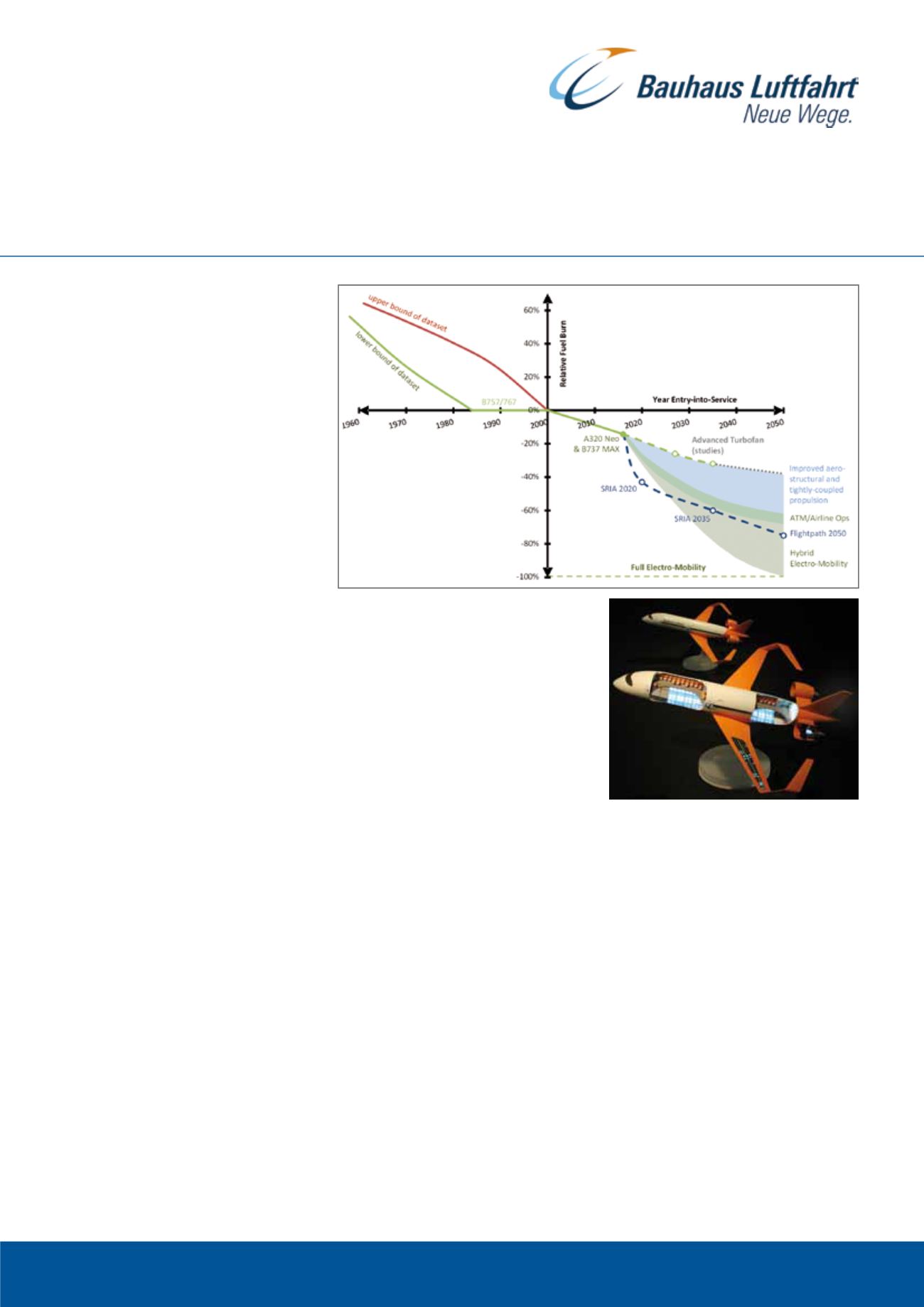
147
Bauhaus Luftfahrt e.V.
Interdisciplinary think-tank for the
future of aviation
Bauhaus Luftfahrt is an interdisciplinary
research institution funded by the four
aerospace companies Airbus Group,
Industrieanlagen-Betriebsgesellschaft
(IABG), Liebherr-Aerospace and MTU
Aero Engines as well as grants of the
Bavarian Ministry for Economic Affairs,
Media, Energy and Technology. The non-
profit association is an internationally-
oriented think tank. The team of around
50 employees deals with the future of
mobility in general and with the future
of air travel in particular. The goal of the
research work is to consider the complex
system of aviation from different points
of view. In every project, the technical,
economic, social and ecological aspects
are considered holistically.
Energy technologies for future
aircraft
A key research focus at Bauhaus Luftfahrt
are novel energy and power conversion
technologies that will help aviation realize
the important emission savings imposed
by political roadmaps such as Flightpath
2050. In particular, Bauhaus Luftfahrt is
studying the potential of electrically pow-
ered flight: While at present universally-
electric aircraft only exist in the ultra-light
category, modern commercial airliners
already have many more electric subsys-
tems than their predecessors, with a fu-
ture tendency to increase both electrical
power levels and voltage ratings.
Challenges to airborne power
electronics
Evidently, to move from there into the
power range of electric propulsion for
passenger aircraft, important research
questions must be addressed: Should the
aircraft’s power architecture rely on DC
or AC components? How can the required
redundancy levels be achieved? Which
materials are most suitable to design
power electronic controllers for MW-level
electric motors? How can we improve
or optimize power, weight and volume
ratios within mobile applications?
Researchers at Bauhaus Luftfahrt are
working to address these questions from
a fundamental point of view, using phys-
ics-based models of power electronic
components and engineering knowledge
of the aircraft as an integrated system to
identify alternatives that could conceiva-
bly meet tomorrow’s requirements.
Strict attention is paid to the fact that
visionary concepts and strategies are also
always application-oriented and techni-
cally feasible, giving rise to concepts such
as Bauhaus Luftfahrt’s 2012 pre-concept
study “Ce-Liner”of a universally-electric
short-to-medium range aircraft for 189
passengers.
In 2012, Bauhaus Luftfahrt unveiled the pre-concept
study “Ce-Liner” for a universally-electric short-to-
medium range aircraft seating up to 189 passengers.
Aviation industry goals and technology options for
future transport aircraft with ultra-low emissions.


